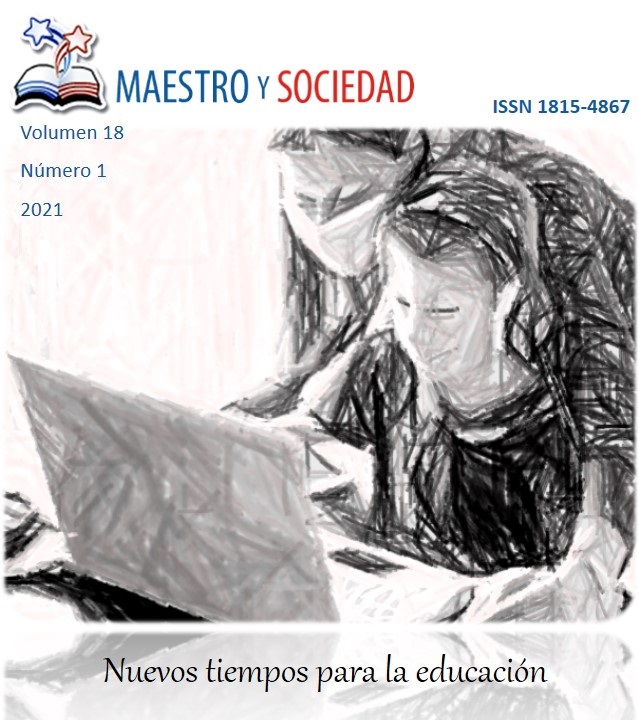Semantic-cultural analysis of the proper noun in a native language: ashaninka language case
Array
Keywords:
anthroponym, proper name, ancestral origin, connotation, prototypical meaning, native nameAbstract
From semantics as a linguistic discipline, it is important to analyze the semes at the language level as well as their realization in speech; Discovering the linguistic motivation that establishes the relationship between the plane of form and content is a fundamental objective within the discipline, as well as for this research, but focused on the study of the proper name. Thus, the objectives that direct this research are twofold: to make an initial description of the Ashaninka anthroponymic process and to present a semantic analysis of the functioning of the proper noun in that same language. From the use of methods such as analysis and synthesis, and techniques such as observation and interviewing informants from the native Asháninka community, the main result was that the proper name in this language does need the referent and that not only it denotes, but connotes due to the distancing of its temporal and spatial conditions of its use. It is concluded that in the proper name there is a clear intention or motivation to name in an ancestral way as a strategy to maintain identity and culture.
References
2. Appelgren, M., Lascarides, A. (2019). Learning plans by acquiring grounded linguistic meanings from corrections. Proceedings of the International Joint Conference on Autonomous Agents and Multiagent Systems, AAMAS. 3, pp. 1297-1305
3. Calame –Griaule, G. (1982). Etnología y Lenguaje. La palabra del pueblo Dogón. Madrid: Edit. Nacional.
4. Casado, M. (1991). Lenguaje y Cultura. La etnolingüística. Madrid: Edit. Síntesis.
5. Cassirer, E. (1973) Mito y Lenguaje. Buenos Aires: Edic. Nueva Visión.
6. Coseriu E. (1962). Teoría del lenguaje y lingüística general. Madrid: Gredos
7. Deroncele Acosta, A., Medina Zuta, P., y Gross Tur, R. (2020). Gestión de potencialidades formativas en la persona: reflexión epistémica y pautas metodológicas. Universidad y Sociedad, 12(1), 97-104. Recuperado de: https://rus.ucf.edu.cu/index.php/rus/article/view/1417/1444
8. Deroncele, A. (2020). Paradigmas de investigación científica. Abordaje desde la competencia epistémica del investigador. Revista Arrancada, 20(37), 211-225. Recuperado de https://revistarrancada.cujae.edu.cu/index.php/arrancada/article/view/331
9. Gé-Licea, Y., Cisneros-Garbey, S. y Bismark Elías-Hernández, A. (2018). Relatos de vida: educación, comunicación y cultura. Maestro y Sociedad, 4, 30-41. Recuperado de https://maestroysociedad.uo.edu.cu/index.php/MyS/article/view/3636
10. Lara, L. (1990). Dimensiones de la lexicografía. A propósito del Diccionario del Español de México. México, DF: El Colegio de México.
11. Llontop, M. (2010). La función del nombre propio en la lengua asháninka. Revista Tipshe, 8, 277-292.
12. Reuter, G. (2019). Wie viel Geschichte steckt in sprachlichen Bedeutungen? Deutsche Zeitschrift fur Philosophie, 67(5), 744-763
13. Säljö, R. (2010). Digital tools and challenges to institutional traditions of learning: Technologies, social memory and the performative nature of learning. Journal of Computer Assisted Learning, 26(1), 53-64
14. Sandín, M. (2003). Investigación cualitativa en educación. Fundamentos y tradiciones. Universidad de Barcelona: McGraw-Hill
15. Solís Fonseca, G. (1997). La gente pasa, los nombres quedan… Introducción en la toponimia. Lima: Ediciones Lengua y Sociedad.
16. Theissen, A. (2020). The semantics of possible argumentative: generation and discursive (re)construction of linguistic meaning. JOURNAL OF FRENCH LANGUAGE STUDIES, 30(1),102-104.
17. Ullman, S. (1965). Semántica. Introducción a la ciencia del significado. Madrid: Edit. Aguilar.
18. Van Dellen, T., Cohen-Scali, V. (2015). The transformative potential of workplace learning: Construction of identity in learning spaces. International Review of Education, 61(6), 725-734
19. Varese, S. (1968). La sal de los cerros. Notas etnográficas e historia sobre los campos de la selva del Perú. Lima: Universidad Peruana de Ciencias y Tecnología.
20. Verlinghieri, E. (2020). Learning from the grassroots: A resourcefulness-based worldview for transport planning. Transportation Research Part A: Policy and Practice, 133, pp. 364-377
21. Zelis, O. (2012). La función del nombre en psicoanálisis: articulación entre las concepciones de J. Lacan y C. S. Peirce. IV Congreso Internacional de Investigación y Práctica Profesional en Psicología XIX Jornadas de Investigación VIII Encuentro de Investigadores en Psicología del MERCOSUR. Facultad de Psicología - Universidad de Buenos Aires, Buenos Aires. Recuperado de https://www.aacademica.org/000-072/921.pdf
Published
How to Cite
Issue
Section
License
This journal provides immediate open access to its content, based on the principle that offering the public free access to research helps a greater global exchange of knowledge. Each author is responsible for the content of each of their articles.



























 Universidad de Oriente
Universidad de Oriente 